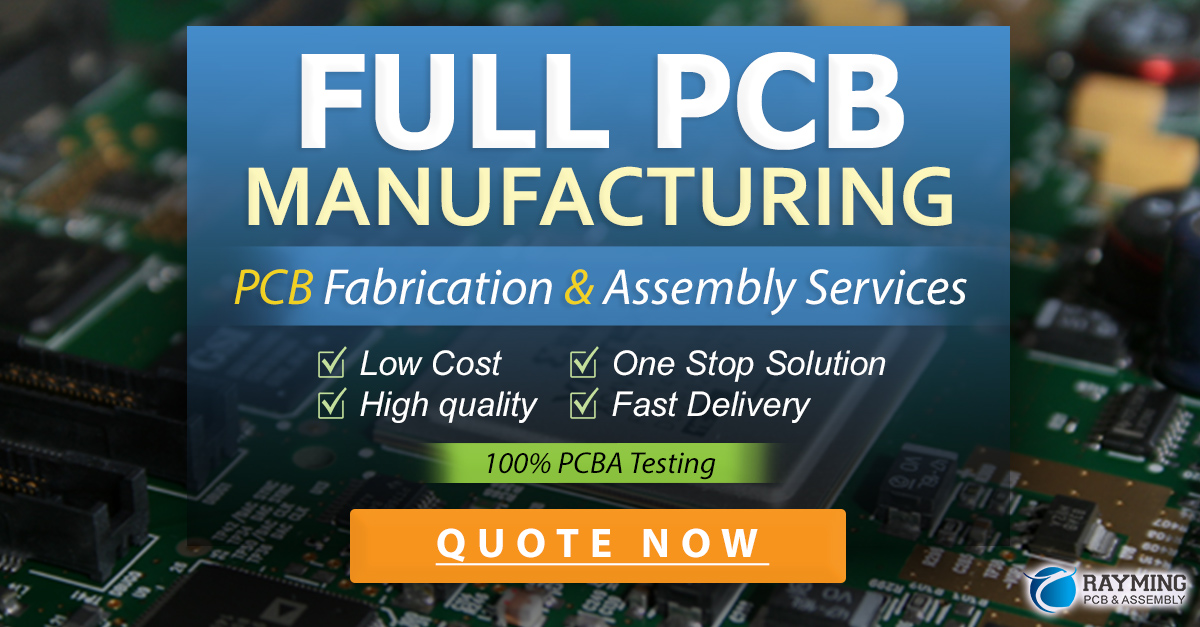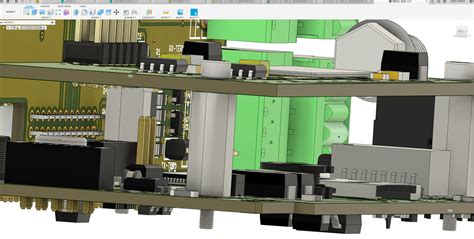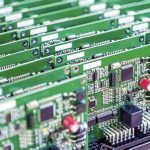Introduction to PCB Innovation
Printed circuit boards (PCBs) have revolutionized the electronics industry since their inception in the early 20th century. PCBs are the backbone of modern electronic devices, connecting and supporting various components to create complex circuits. In recent years, PCB technology has undergone significant advancements, particularly in the realm of industrial applications. These innovations have led to improved performance, reliability, and efficiency in various sectors, from manufacturing to telecommunications.
The Role of PCBs in Industrial Applications
PCBs play a crucial role in industrial applications, where reliability and durability are of utmost importance. Industrial PCBs are designed to withstand harsh environments, including extreme temperatures, vibrations, and exposure to chemicals. They are also built to handle high power requirements and offer superior signal integrity, ensuring the smooth operation of industrial equipment.
Some common industrial applications of PCBs include:
- Industrial automation and control systems
- Power electronics and energy management
- Telecommunications infrastructure
- Aerospace and defense systems
- Medical devices and equipment
Advancements in PCB Materials
One of the key areas of PCB innovation is in the development of new materials. Traditional PCBs are made from a substrate material, typically FR-4, which is a glass-reinforced epoxy laminate. While FR-4 is suitable for many applications, it has limitations in terms of thermal conductivity and high-frequency performance.
To address these challenges, researchers and manufacturers have developed advanced PCB materials, such as:
- High-Frequency Laminates:
- Rogers Corporation’s RO4000 series
- Isola Group’s I-Tera MT40
-
Taconic’s RF-35
-
Thermal Management Materials:
- Aluminum-backed PCBs
- Insulated Metal Substrate (IMS) PCBs
- Ceramic-based PCBs
These materials offer improved thermal conductivity, lower dielectric losses, and better high-frequency performance, enabling the development of more efficient and reliable industrial electronic systems.

Innovations in PCB Manufacturing Processes
In addition to advancements in materials, PCB manufacturing processes have also undergone significant improvements. These innovations have led to higher precision, faster production times, and reduced costs.
HDI PCBs
High-Density Interconnect (HDI) PCBs are a prime example of manufacturing innovation. HDI technology allows for the creation of smaller, denser PCBs with finer trace widths and spacing. This is achieved through advanced manufacturing techniques, such as:
- Microvias: Small, laser-drilled holes that enable high-density interconnections between layers.
- Sequential lamination: A process that builds up the PCB layer by layer, allowing for more complex designs.
- Embedded components: Integration of passive components within the PCB substrate, saving space and improving performance.
HDI PCBs are increasingly being used in industrial applications where space is limited, and high-performance is required, such as in robotics and avionics systems.
Additive Manufacturing
Additive manufacturing, also known as 3D printing, is another area of innovation in PCB production. This technology allows for the creation of complex, three-dimensional PCB structures that would be difficult or impossible to achieve with traditional manufacturing methods.
Additive manufacturing techniques for PCBs include:
- Inkjet printing: Depositing conductive inks onto a substrate to create circuit patterns.
- Aerosol jet printing: Using a focused aerosol beam to deposit conductive materials with high precision.
- Stereolithography (SLA): Building up the PCB layer by layer using a UV laser to cure a photopolymer resin.
Additive manufacturing enables rapid prototyping, customization, and the creation of unique PCB geometries, opening up new possibilities for industrial applications.
Smart PCBs and the Internet of Things (IoT)
The rise of the Internet of Things (IoT) has driven innovation in PCB design and functionality. Smart PCBs, equipped with sensors, microcontrollers, and wireless communication capabilities, are enabling the development of connected industrial systems.
Some examples of smart PCB applications in industry include:
- Industrial IoT sensors: PCB-based sensors for monitoring equipment performance, environmental conditions, and energy consumption.
- Wireless communication modules: PCBs with integrated Wi-Fi, Bluetooth, or cellular connectivity for remote monitoring and control.
- Edge computing devices: PCBs with embedded processors and memory for local data processing and analysis in industrial settings.
Smart PCBs are playing a crucial role in the digital transformation of industries, enabling predictive maintenance, process optimization, and enhanced operational efficiency.
PCB Design Automation and Simulation Tools
As PCBs become more complex and demanding, designers are turning to advanced software tools to streamline the design process and ensure optimal performance. PCB design automation and simulation tools are driving innovation by enabling faster, more accurate, and more reliable designs.
Some notable PCB design software packages include:
- Altium Designer
- Cadence OrCAD
- Mentor Graphics PADS
- Zuken CR-8000
These tools offer features such as:
- Schematic capture and layout: Creating circuit diagrams and PCB layouts with intelligent routing and component placement.
- Design rule checking (DRC): Automated checks for design rule violations and potential manufacturing issues.
- Signal integrity analysis: Simulating and optimizing signal propagation to ensure reliable high-speed performance.
- Thermal analysis: Modeling heat dissipation and identifying potential thermal issues in the PCB design.
By leveraging these powerful design tools, engineers can create innovative, high-performance PCBs for industrial applications with greater efficiency and confidence.
The Future of PCB Innovation in Industrial Applications
As technology continues to advance, the future of PCB innovation in industrial applications looks bright. Some emerging trends and developments that are likely to shape the industry include:
Flexible and Stretchable PCBs
Flexible and stretchable PCBs are gaining traction in industrial applications where conformity to irregular surfaces or dynamic motion is required. These PCBs are made using flexible substrates, such as polyimide or thermoplastic polyurethane (TPU), and can bend, twist, or stretch without losing functionality.
Potential applications for flexible and stretchable PCBs in industry include:
- Wearable devices for worker safety and monitoring
- Robotics and soft actuators
- Conformable sensors for curved surfaces
Embedded AI and Edge Computing
The integration of artificial intelligence (AI) and edge computing capabilities directly onto PCBs is another area of innovation. By incorporating AI accelerators, such as application-specific integrated circuits (ASICs) or field-programmable gate arrays (FPGAs), PCBs can perform complex data processing and decision-making tasks locally, reducing latency and improving responsiveness.
Embedded AI and edge computing on PCBs have potential applications in:
- Industrial machine vision systems
- Predictive maintenance and anomaly detection
- Autonomous robots and drones
Sustainability and Eco-Friendly PCBs
As environmental concerns grow, there is an increasing focus on developing sustainable and eco-friendly PCBs. This includes the use of recyclable and biodegradable materials, as well as the adoption of green manufacturing processes that minimize waste and energy consumption.
Some examples of sustainable PCB Innovations include:
- Halogen-free and Lead-Free PCBs
- Biodegradable substrate materials, such as paper-based PCBs
- Additive manufacturing techniques that reduce material waste
By embracing sustainable practices, the PCB industry can contribute to a greener future while meeting the demands of industrial applications.
FAQs
Q1: What are the benefits of using HDI PCBs in industrial applications?
A1: HDI PCBs offer several benefits in industrial applications, including:
– Reduced size and weight, enabling more compact and portable devices
– Improved signal integrity and high-speed performance
– Enhanced reliability and durability due to the use of advanced manufacturing techniques
– Increased functionality and component density, allowing for more complex designs
Q2: How do smart PCBs enable the Internet of Things (IoT) in industrial settings?
A2: Smart PCBs enable the IoT in industrial settings by integrating sensors, microcontrollers, and wireless communication capabilities directly onto the board. This allows for the collection, processing, and transmission of data from industrial equipment and systems, enabling remote monitoring, control, and optimization. Smart PCBs form the foundation of connected industrial ecosystems, facilitating the digital transformation of industries.
Q3: What are the advantages of using additive manufacturing for PCB production?
A3: Additive manufacturing offers several advantages for PCB production, including:
– Rapid prototyping and shorter lead times, enabling faster product development cycles
– Customization and the ability to create complex, three-dimensional PCB structures
– Reduced material waste compared to traditional subtractive manufacturing methods
– Potential for cost savings, particularly for low-volume production or specialized designs
Q4: How do PCB design automation and simulation tools drive innovation?
A4: PCB design automation and simulation tools drive innovation by enabling engineers to:
– Create complex, high-performance PCB designs with greater efficiency and accuracy
– Identify and resolve potential issues early in the design process, reducing the need for costly revisions
– Optimize signal integrity, thermal performance, and other critical aspects of PCB design
– Collaborate effectively and share design data across teams and organizations
By leveraging these powerful tools, engineers can push the boundaries of PCB design and develop innovative solutions for industrial applications.
Q5: What are some emerging trends in PCB innovation for industrial applications?
A5: Some emerging trends in PCB innovation for industrial applications include:
– Flexible and stretchable PCBs for wearable devices, robotics, and conformable sensors
– Embedded AI and edge computing capabilities for local data processing and decision-making
– Sustainable and eco-friendly PCBs using recyclable and biodegradable materials
– Continued advancements in HDI technology and additive manufacturing techniques
These trends are shaping the future of PCBs in industrial settings, enabling new applications, improved performance, and more sustainable practices.
Conclusion
PCB innovation is driving significant advancements in industrial applications, from improved materials and manufacturing processes to the integration of smart technologies and embedded AI. As the demands on industrial electronics continue to grow, PCB designers and manufacturers are rising to the challenge, developing solutions that offer higher performance, greater reliability, and enhanced functionality.
By embracing emerging trends and technologies, such as flexible and stretchable PCBs, additive manufacturing, and sustainable materials, the PCB industry is poised to play a crucial role in the digital transformation of industries. As we look to the future, it is clear that PCB innovation will continue to shape the landscape of industrial electronics, enabling new possibilities and driving progress across sectors.






Leave a Reply